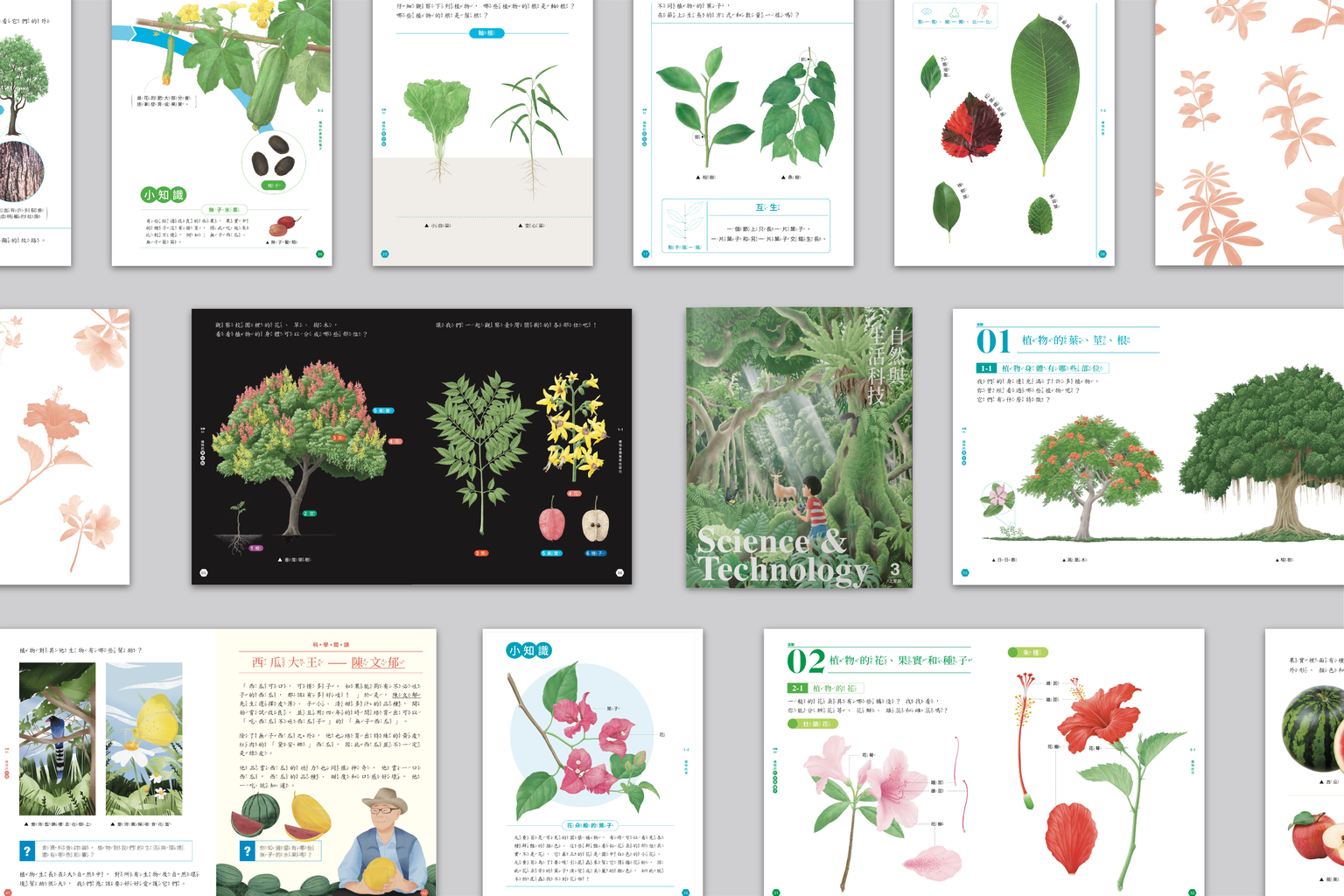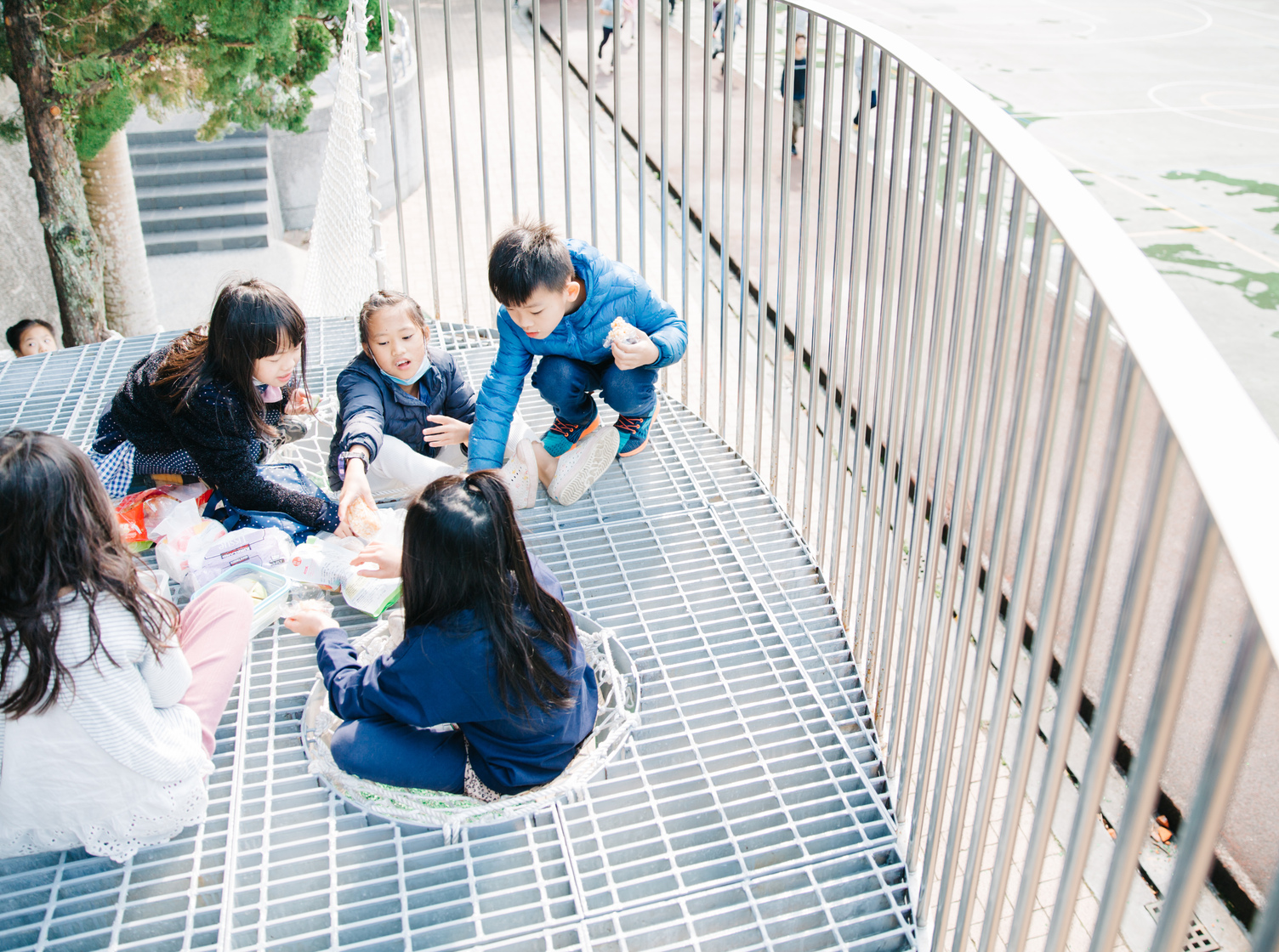Rolling out Changes through Industry Chain, Setting off Butterfly Effect of Beauty on all Campuses in Taiwan
- Exclusive Interview with Co-Founder Chen Mu-Tien of Aestheticell
“In the past, campus improvement projects mostly focused on ‘addition design,’ which led to more and more elements on campus that had no continuity; instead, it was a collage. It was like the school had no design director, and could not plan the school’s spatial design guidelines over the next ten years from a design thinking perspective, and consequently, many campus improvement projects could not perfectly function.”

Slight Design Changes that Are Possible to Turn the Learning Journeys of Hundreds of Children around
From “Aestheticell – Aesthetic Textbook Project” that changes the books children read every day to “Design Movement on Campus” executed by TDRI under the commission of Ministry of Education that flips the daily spaces of children, Chen Mu-tien believes that people’s imagination of education in the past was often limited by the pattern of “teachers teach on podium, and children listen below;” however, children’s learning does not start from the moment the bell rings, but from the moment they open their eyes in the morning. Therefore, the campus space students spend 8 hous in everyday and the textbooks they read are some aspects in our education that have long been overlooked.
“Changing campus environment not only enhances visual sensation and stabilizes students’ emotions, but also improves the space’s functionality, allowing students to learn better. Some schools, for example, make use of large, ceiling to floor blackboards and moveable desks and chairs, which make teachers’ teaching models and students’ grouping methods more diverse and fun. These seemingly minor designs may influence the learning journeys of hundreds or even thousands of students using this classroom in the future, or even their life in the future.”
Introduce Design Expertise to Campus for Education Professionals to Experience New Possibilities in Class
Campus spaces do need to change. In fact, the government has allocated long-term funds in hope to help schools improve spaces. The government is willing and does its best to provide resources, so what is the main issue? Regarding this question, Chen Mu-tien believes that it is because schools do not have a design director. “In the past, campus improvement projects mostly focused on ‘addition design,’ which led to more and more elements on campus that had no continuity; instead, it was a collage. It was like the school had no design director, and could not plan the school’s spatial design guidelines over the next ten years from a design thinking perspective, and consequently, many campus improvement projects could not perfectly function.”
Even so, there are barriers inviting a design director to work on campus, but through “Design Movement on Campus,” we can introduce design expertise to sites of education, so that principals and teachers who do not come from a background in design can also follow the progress of “Design Movement on Campus” to gradually understand the different possibilities of campus design.


TDRI Assumes the Role of Connector, Becoming the Key of Success
Regarding this, Chen also added that compared to past campus improvement projects, the advantage of “Design Movement on Campus” lies in the fact that TDRI plays the link between schools and design teams, rather than having schools searching for design teams on their own. “When schools launched own tenders in the past, because principals and teachers did not come from design related backgrounds, it would be amateurs leading professionals. However, TDRI can find professional jurors and advisors, bringing top designers with great ideas onto campuses; this allows schools to raise their needs and become the users with user experience, whereas design professionals will focus on solving the problems, and TDRI plays the bridge of communication and assumes the role of gatekeeper. This is the key to the success of ‘Design Movement on Campus’.”

Roll out the Power of Change through Industry Chain Becomes the Greatest Challenge in the Future
Nonetheless, Chen Mu-tien also pointed out that the key to success and challenge of turning Taiwan’s campus environment around with design is to sustainably introduce design concept to school campuses even without TDRI in the future. “For example, TDRI can reach out to top design teams in Taiwan, but when TDRI is no longer involved, can schools still find such outstanding design talents?” questioned Chen Mu-tien.
Therefore, to Chen Mu-tien, how to lead schools to lead the school the understand the thinking process of the design team, and how the design team defines problems, and slowly introduce this kind of thinking model and design procedure into public constructions, through each demonstrative project, are really the keys to changing school campuses. Perhaps “Design Movement on Campus” can accumulate a list of designers in each city or county through its implementation; through the experience accumulated through “Design Movement on Campus,” the public sector can demand schools to introduce design concepts and professional control and management capabilities when funding school campus improvement projects in the future. “Now, we utilize the power of TDRI to slowly roll out a micro-ecosystem between schools and design teams; in the future, how can we continue to sustain this industry chain, allowing this micro-ecosystem to survive, is something we must constantly consider.”


